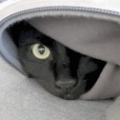Dear,
Recently I came accross the interesting information about Davis Station on Antarctica (VK0JLX)
https://www.qrz.com/db/VK0JLXThey are using commercial antennas made by RFS
The receiving antennas are ST-330s made by the company. At VK0JLS they call it sloping triangles, but essentially the antennas are terminated V-beams (2 longwires) sloping down from a center mast.
I found that interesting enough to do some simulation work with NEC2.
My findings:
- It seems to me, that the low horizontal wire which connects the ends of the sloping wires from the mast (with the ST-330 they are 100m long) are functionally NOT necessary. But if it is difficult to make good and stable earth connections to terminate the sloping wires where they touch the ground level, the horizontal wire is a proper way to terminate, without any earth connection.
- The antenna has a very good low angle pattern, not many side lobes and seem to be rather similar as a large log periodic beam. It sounds very quit and is therefore excellent for reception. Although you can use it for transmit as well, the efficiency is not the best (due to large bandwidth and losses in the termination resistors). However for reception it is hardly necessary to use a pre-amp. Nor is it even possible to use a pre-amp here in Europe, because broadcast stations from 15/17Mhz band are extremely loud - you can check it out on my online kiwi (see URL below)
- >15Mhz vertical radiation angles are around 10deg or even lower!
- The termination resistor with the RFS original design of their product ST330 is about 800Ohm in the middle of the horizontal wire which connects the ends of the sloping wire. This is also the feedpoint resistance. The antenna becomes very broadband with 800Ohm feedpoint resistance. RFS feed their antenna with open wire feeder of 800Ohm, however you can easily feed it also with coax, whith a proper impedance transformer at the feedpoint to transform from 50Ohm or 75Ohm coax to the 800Ohm antenna impedance.
- If you choose to terminate the both sloping wires individually at the end the resistors at each end should be 400Ohm. The natural feedpoint impedance keeps 800 Ohm resistive - so no change in feeding the antenna
- RFS uses 100m sloping wires with the ST330. They also have a smaller version with 2x80m wires . My simulations show, that there seem to be an optimal angle, which provides smoothest pattern (no sidelobes, best F/B ratio, best match to resistive 800Ohm). As with 100m wires, the center mast is 22m, if you choose shorter wires, you should lower the center mast (!!) to achieve best pattern! The center tower of the smaller RFS antenna version is therefore only 16m high.
- The longer you make the wires, the lower the frequency becomes, where you can achieve gain and significant directivity.
- The terminated V-beams are so far the most interesting RX-antennas, as they offer gain (high bands, where you really need as much sensitivity possible!), high natural bandwidth (SWR better than 1:2 from 1Mhz to 30Mhz!), and easy installation and cheap cost. It can be easily scaled down to much smaller dimensions, as long you can manageat least 1.5wavelength per leg. The more the better. And also my practical antenna (see below) is almost as quit as the 170m Beverages, but with much better performance and higher sensitivity on the high bands.
- Since yesterday I have build a much smaller version of terminated V-beam: 2x41m wires, 60deg horizontal angle, sloping down from only 11m (in a tree) to ground level, 400Ohm resistors to a single ground rod. Feedpoint with very small BN 202-73 (8turns tot the ant wires, 2 turns to 50Ohm coax). The main direction is to 120deg from here (middle east, indian ocean, east africa).
- My new V-beam is also on use for WSPR reception used with wsprdaemon script from Rob
- here is the URL to check my test antenna out:
http://on5kq.ddns.net:8073Ulli, ON5KQ
